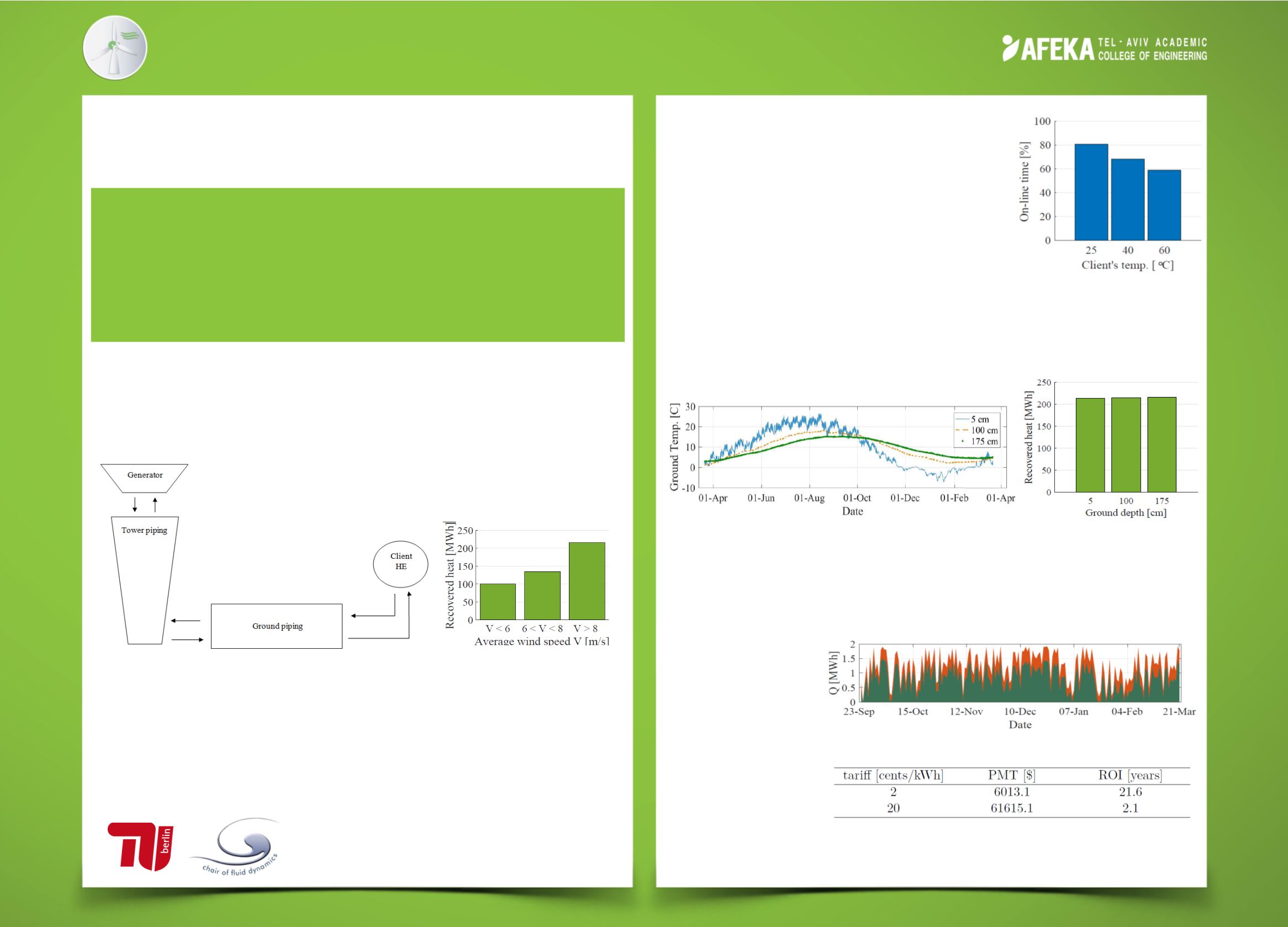

Wind Turbine Waste Heat Recovery System
Objective
Evaluating the amount of heat energy which can be physically used by a third
party (client). A time-resolved simulation has been developed in MATLAB
Simulink, based on efficiencies of actual components, measured wind speed
data, ambient and soil temperatures from various locations.
Or Raudanski
Advisors: Dr. –ing. George Pechlivanoglou, Dr. –ing. Milad Hamisa
Mechanical Engineering
In this thesis, a numerical, time-resolved simulation model
has been developed to estimate the amount and availability
of heat loss from a 2.5 MW wind turbine’s generator. Instead
of wasting the heat, It is suggested to collect it to a working
fluid, channel it through a system of piping and dissipate it at
a third party/client for heating utilization.
fig 1: Block diagram of the suggested system
Results
Multi independent variables (i.e. pipe dimensions, insulation thickness,
ambient and soil temperatures) affect the amount and availability of the
recovered heat in the system. It was observed that the system is most
sensitive to the wind speed input, as seen in fig. 2.
Different
client’s temperature demands
dramatically effected the availability of the
recovered heat (fig. 3). It was observed that higher
client’s temperature demand caused higher
internal losses in the system, thus causes the
system to become impractical. Since soil
temperature behaves in a periodic manner (fig. 4),
the ground piping’s depth had no effect on the
annual recovered heat (fig. 5). On the other hand,
due to the phase shift at different depths, heat
availability may be impaired during cold seasons.
The simulation had shown that the suggested
system design recovered more than 67% of the heat loss. Fig 6 demonstrates
the amount of recovered heat for the client (green) out of the total generated
heat at the generator (orange).
fig. 2: heat recovered from
3 wind sites
fig. 3:avilabiity of heat at different
client temp.
fig.4:soil temperature at different depths
fig. 5:recovered heat
at different depths
Conclusion
The results had shown that wasted heat from a 2.5 MW wind turbine can meet
the space-heating demand for more than 11 households in a cold area such as
North Dakota, USA, and about 16-20 households in Northern European
countries. A principle
fig.6:recovered heat out of total generated heat
cost estimation and
feasibility
assessments have
revealed that the
suggested system will
be highly feasible in
countries where the
price for energy
exceeds
15
cents/kWh heat
(table 1).
table 1: ROI table
Technische Universität Berlin
HFI fluid dynamics and technical acoustics
















